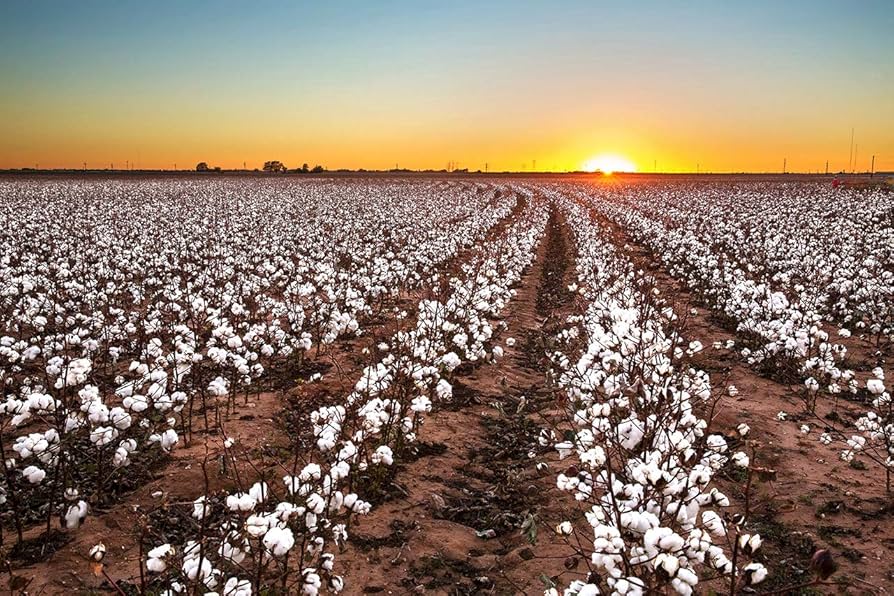As global cotton navigates tariff turbulence, India faces domestic and export challenges

The global cotton market is currently experiencing significant instability due to factors like tariffs, fluctuating prices, and evolving consumer preferences. While the recent price drop is likely temporary, the underlying challenges pose both immediate and long-term implications for cotton-producing countries, particularly India, a major player in the global cotton trade.
Tariff confusion and market volatility
Indeed, tariffs are a significant contributor to market volatility. The lack of clear communication from policymakers has led to confusion and speculation, impacting investor confidence. Paul Tudor Jones's prediction of a market meltdown, based on fundamental similarities to the 1987 crash, underscores the severity of the situation.
Globally tariff disputes between major economies like the US and China have disrupted established trade flows, creating uncertainty for cotton exporters and importers worldwide. Fluctuations in currency exchange rates, influenced by tariff policies, further complicate international trade transactions.
Impact on India
India, as a significant cotton exporter, is vulnerable to changes in global trade policies. Any increase in tariffs by major importing nations can significantly impact India's export volumes and revenue. The price instability has caused issues for Indian farmers who have to deal with the rapid changes.
Meanwhile reports of yarn mills operating at reduced capacity (up to 50 per cent) indicate a slowdown in demand, potentially due to factors like rising competition from synthetic fibers and economic downturns. High inventory levels and sluggish sales are also putting pressure on yarn prices, affecting mill’s profits. What’s more the consumer too continues to move from cotton clothing. highlighting the growing popularity of synthetic fibers. This shift in consumer preferences poses a long-term challenge for the cotton industry, requiring efforts to promote the benefits of natural cotton.
Indian cotton farmers have been facing issues with pest attacks, and climate change related issues, such as unseasonal rains, and droughts. These issues reduce crop yield, and increase the cost of production. The large amount of small farmers in India makes it difficult to implement new technologies, and improve efficiency. The Indian domestic market is also affected by the fluctuations in global market, because of high export volume.
Cotton export and import dynamics
India's cotton trade is characterized by both significant exports and imports, making it susceptible to global market fluctuations.
India is a major exporter of cotton, primarily to countries like Bangladesh, Vietnam, and China. Any slowdown in demand from these countries significantly impact India's export revenue. The quality of Indian cotton, and the price, is a key factor in how much is exported.
India also imports high-quality cotton, particularly extra-long staple (ELS) cotton from the US and Egypt, to meet the textile industries demand. Fluctuations in global cotton prices and exchange rates affect the cost of these imports.
Table: India’s cotton export and import
|
Year |
Export volume (MT) |
Source |
|
2021-22 |
4,300,000 |
CITI |
|
2022-23 |
2,200,000 |
CITI |
|
2023-24 (Projected) |
1,800,000 |
CITI |
|
Year |
Import volume (MT) |
Source |
|
2021-22 |
1,200,000 |
Ministry of Textiles, India |
|
2022-23 |
1,500,000 |
Ministry of Textiles, India |
|
2023-24 (Projected) |
1,800,000 |
Ministry of Textiles, India |
Meanwhile, the tariff war between the US and China has led to a significant decline in Chinese cotton imports from the US, creating opportunities for other cotton-exporting nations, including India. However, the overall uncertainty has negatively impacted global cotton prices.
Thus the Indian cotton industry must address both domestic and global challenges to ensure its sustainability. This includes promoting the use of natural cotton fibers among consumers; investing in research and development to improve cotton yields and quality; adopting sustainable farming practices; diversifying export markets; improving the efficiency of the domestic textile industry; government policies that support the farmers, and promote the cotton industry.
